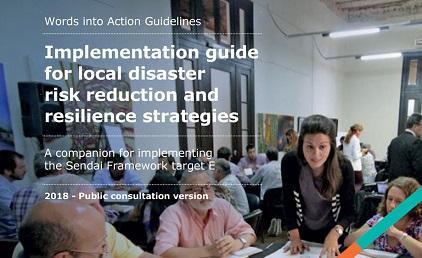
By Dave Zervaas
GENEVA, 19 March, 2018 - A new guide designed to support local governments in their efforts to prevent disasters and reduce disaster losses is now available in draft form for public review before it will be finalized and launched in three months’ time.
The ‘Implementation guide for local disaster risk reduction and resilience strategies’ addresses the need to tackle underlying disaster risk drivers and strengthening good governance in disaster risk management, with a focus on local governments including authorities, planners and managers at city or other sub-national levels.
It provides an important boost to efforts to meet a key target in the Sendai Framework for Disaster Risk Reduction, the global plan to reduce disaster losses, target (e) which seeks to increase the number of countries with national and local strategies for disaster risk reduction.
The guide offers practical advice on how to develop and implement a holistic and integrated disaster risk reduction strategy that contributes to building resilience at the local level. The guide can be downloaded at https://www.preventionweb.net/publications/view/57399 and those who wish to provide feedback can do so at https://www.surveymonkey.com/r/ZPHQSYW where a short survey will take no more than 5-10 minutes.
The guide is divided into seven chapters. Following the introduction, chapter two highlights the role of subnational levels in developing local disaster risk reduction and resilience strategies and the importance of localizing DRR.
Chapter three delineates the main characteristics of a local disaster risk reduction and resilience strategy, while chapter four introduces the enabling factors that generate the conditions for its development throughout an inclusive and participatory process.
Chapter five elaborates on the three core elements that aid in implementing a local disaster risk reduction and resilience strategy. Chapter six includes a selection of case studies exemplifying some of the main themes covered in the guide. Finally, chapter seven draws some conclusions.